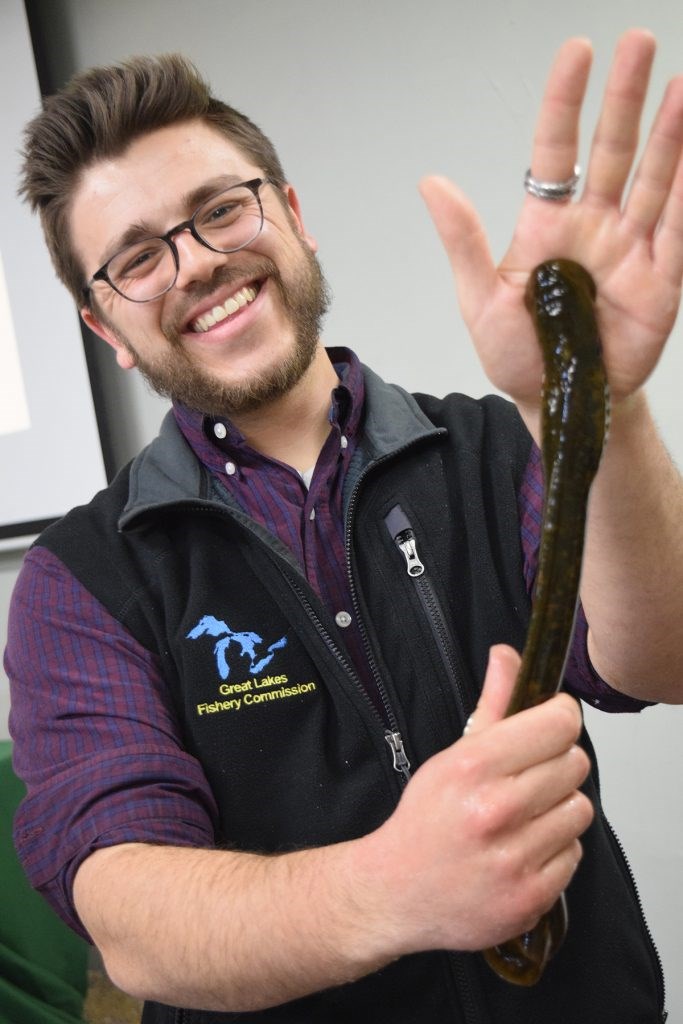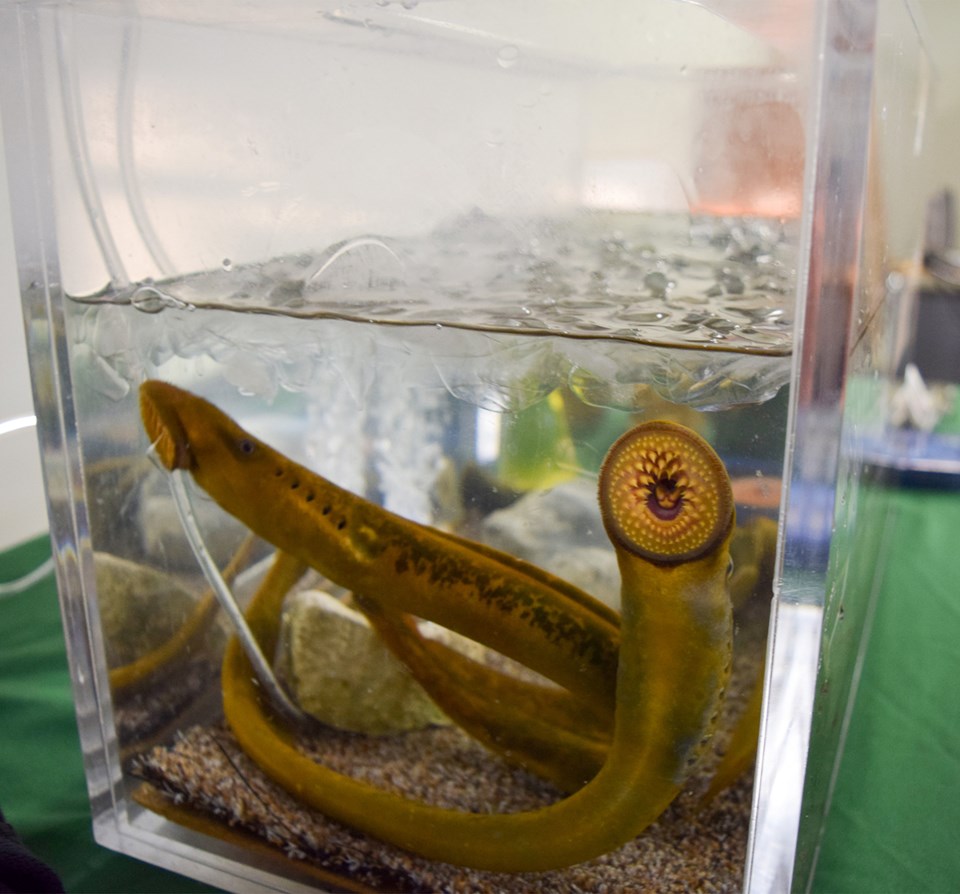Cathy Dobson
Eyes grew wide and some stepped back as Ross Shaw fished a foot-long sea lamprey from a tank and let its sucker mouth and 150 tiny teeth sink into the palm of his hand.
“It feels a bit strange but it doesn’t hurt,” he told an audience of about 25 at this month’s Green Drinks environmental talk.
That’s because the skin on Shaw’s hand is thick. But the thin scales of a whitefish or lake trout are no match when a parasitic sea lamprey latches on.
That’s how 12 million fish in the Great Lakes die each year. Many others survive with tell-tale circular wounds on their sides where a lamprey sucked their blood.
Twelve million sounds like a lot, but it’s a vast improvement from the 103 million fish sea lampreys reportedly killed annually in the late 1950s, when their number was at an all-time high, Shaw said.

As a communications associate with the Great Lakes Fishery Commission (GLFC) based in Ann Arbor, Michigan, it’s Shaw’s job to explain how the commission is controlling the sea lamprey population.
The sea lamprey is a primitive, eel-like fish native to salt water that first turned up in Lake Erie a century ago. They were the Great Lakes’ most devastating invasive species, but a 70-year battle has been successful, Shaw said.
“We’ve reduced them by 90%. What we’re doing is extremely effective,” he said.
The GLFC formed in 1954 specifically to control sea lampreys and oversee the science needed to do the job. The commission works on both sides of the border and consults with anglers from Canada and the U.S., as well as the Canadian Department of Fisheries and Oceans. It’s also affiliated with Guelph University, Michigan State University and the U.S. Geological Survey.
The co-operative effort, though successful, isn’t easy.
Female sea lampreys can each lay 100,000 eggs, and a single adult can destroy 40 pounds of fish before spawning.
Through trial and error, scientists with GLFC were able to formulate a selective pesticide (TFM) that targets sea lamprey larvae.
“We lampricide every three to four years in streams or small lakes, knocking out 10,000 to 100,000 lamprey each time,” Shaw said.
Barriers and traps have been tried with some success but the main defence continues to be TFM.
Some members of Green Drinks questioned the use of pesticides in the Great Lakes. Shaw said TFM biodegrades with the dead lampreys.
“It’s a simple evil that we have to take in stride for the health of the fisheries,” he said.
GLFC pesticide programs are meeting targets in Lakes Michigan and Ontario. However, they are somewhat less successful in Lake Huron and there is “still a way to go” in Lakes Erie and Superior, Shaw said.
The sea lamprey is the only specie of lamprey being controlled, he added.
Four native lamprey species live in the Great Lakes and are quite a bit smaller. Two are parasitic but not nearly as destructive as the sea lamprey.
